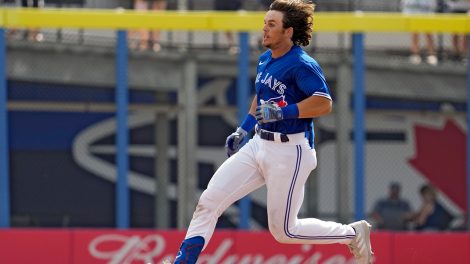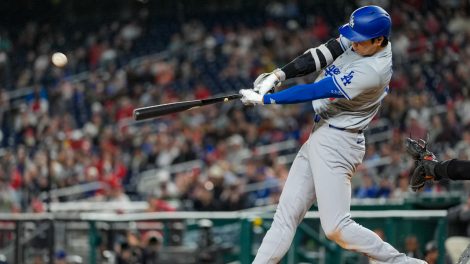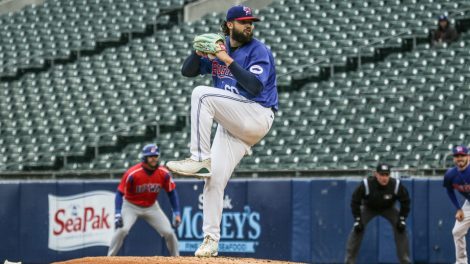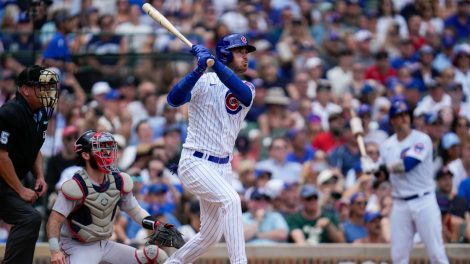TORONTO – On July 13, 1988, a mere eight days into his tenure as general manager of the Montreal Expos, Dave Dombrowski made the first trade of his accomplished career, acquiring Tracy Jones and Pat Pacillo from the Cincinnati Reds for Jeff Reed, Herm Winningham and Randy St. Claire. The deal was partly about the present in Jones, an outfielder who posted an .815 OPS in 53 games after his acquisition and was later flipped for Mike Aldrete, and partly about the future in Pacillo, at the time a well-regarded pitching prospect.
Trade talks then were anything but an exact science, with decisions rooted in subjective estimates of what each player offered in the here and now, and what they may offer in the future.
“You had one thing (to work off) which was the evaluation of your scouts and that’s what you went by,” says Dombrowski, who’s consummated hundreds of trades with the Expos, Florida Marlins, Detroit Tigers and, now, Boston Red Sox since that initial swap. “Of course, you always factored in your own feelings and that of your major-league coaching staff, but you evaluated them based upon what you saw.”
Three decades later, the transformation of the trade process in baseball is akin to medicine moving from the pseudoscience that made bloodletting a catch-all treatment to the evidence-and-research-based approach employed by physicians now. Weightings and methodology vary from club to club, but executives like Dombrowski no longer make instinctive assessments in trying to decide if Player X is fair value for Player Y, instead using data to run names through evaluative equations to determine whether the numbers line up.
As trade discussions begin to pick up around the game ahead of the now-unified July 31 trade deadline – no more August waiver deals this year – fans should keep that in mind as they imagine various scenarios for their club.
[relatedlinks]
“Nowadays the (scouting) part has not changed, but you complement that with statistical analysis, numerous sources in your organization and then we try to combine that data-analytical approach with our scouting approach to come up with the best decision,” says Dombrowski. “You have much more information and balancing of that information that takes place.”
The specifics of how teams assign value to players is closely guarded, but there are some rough guidelines to keep in mind as the bartering plays out.
Performance-measuring systems like Wins Above Replacement, or WAR, offer a quick estimate of how much value a player is providing. A win is worth about $9 million in the game right now, so Mike Trout, for example, who’s already delivered 5.6 WAR this season as calculated by Baseball Reference, has provided the Los Angeles Angels with $50.4 million of value this year. Against his $36.8-million salary, he’s already provided $13.6 million worth of surplus value.
Now, teams have projection models for how a player can be expected to perform over time – again, these vary in calculation and accuracy from club to club – and based on a player’s contractual control and expected/guaranteed cost, they can figure out how much surplus is provided. The more surplus a player has, the more he’s worth, which is why prospects are so closely hoarded these days, and what makes Vladimir Guerrero Jr. among the most valuable players in all of baseball.
The relative accuracy with which teams value players, prospects and even draft picks is the envy of executives in other sports. As Toronto Maple Leafs GM Kyle Dubas said when discussing why he decided to part with a first-round pick to dump Patrick Marleau’s $6.25-million salary cap hit on the Carolina Hurriances: “We’ve got a valuation system that we use. … It’s not perfect. There’s no science that tells you how much they’re worth like in baseball, which would be great.”
[snippet id=4545751]
At times, that can make baseball trade talks almost clinical. A couple of years ago, an executive described how concepts are boiled down in seconds, with names run through a valuation system and the numbers added up to see whether an offer has merit or not.
If the dollar figures do add up, then teams must decide whether the players involved fit within their roster frameworks, if the salaries line up, and whether their scouting departments actually like the players.
“I think (trade talks) are more efficient in presenting it in the way you described,” says Dombrowski. “What’s interesting is even if you have two analytical people, they may view player values differently because they weigh certain factors more strongly than the other person. You have to remember that it’s not necessarily just a mathematical formula. The second thing is that you have to decide at times when you’re dealing with that if we’re winning comes into play, the immediacy of something.”
As an example, Dombrowski points to his Dec. 6, 2016 acquisition of ace lefty Chris Sale from the Chicago White Sox for, at the time, uber-prospects Yoan Moncada and Michael Kopech plus Luis Alexander Basabe and Victor Diaz. In a vacuum, paying that price for Sale doesn’t make much sense. But with the Red Sox coming off an AL East title and pushing to go deeper into the post-season after getting swept by Cleveland in the division series, the equation changes.
“When you trade upside minor-league players, there’s no value that is going to give the weight needed to make that deal in a positive fashion,” says Dombrowski. “Analytics is going to come back and say, ‘Well, this really isn’t a good trade.’ However, you also know that you’re picking up one of the best pitchers in the game of baseball, so you’re willing to sacrifice some of that future potential for now. And even the good analytical people will say, ‘Yeah, that’s understandable.’
“But if you were just saying value for value, you would not be able to make a trade like that.”
Which is why teams selling off assets like the Toronto Blue Jays are asking real high right now for impact pieces like Marcus Stroman and Ken Giles. There’s an opportunity cost to winning and they want to leverage the pressure on contending clubs to get a better return.
On the flip side, teams can see how precisely how much prospect capital they’re actually surrendering, which makes lopsided returns more difficult.
This year, the opportunity for teams with October aspirations is more finite with no second chance beyond July 31. And at the moment there isn’t an exact way to objectively measure how much the opportunity cost of playing October baseball is really worth.
“I’m sure you can (measure it) but we haven’t necessarily found it,” says Dombrowski. “I think that’s almost a separate calculation in the sense that you say, ‘OK, you win (a post-season berth, or a World Series title). What is that worth to you? What is that worth to you on the field? What does that work for you off the field with drawing fans?’ There are so many more factors that become involved in that, but winning usually is the number one factor.”
For those that want to get better, the window to improve closes in three-and-a-half weeks. Determined to get better? Get your spreadsheet on.









